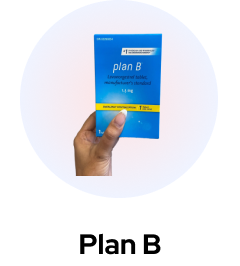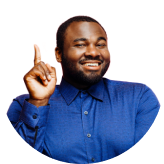Written by: Jill Health Team
Reviewed by: Sarah Bento De Sousa, PharmD RpH
Lash serums are generally considered safe, however potential skin irritation is possible. Not sure how to proceed next? In this article, we’re exploring everything about lash serums, focusing on their safety and effectiveness for eyelash growth. We look into how these serums work, their benefits, and possible side effects, especially with ingredients like prostaglandins.
We’ll also cover the differences between lash growth serums and conditioners, and what results to expect. It’s a comprehensive guide for anyone like us wanting to know more about lash serums, whether they’re safe, and how to choose the right one for our eyelashes.
What is Lash Serum?
Lash serum is a vital product in the beauty industry, designed to enhance eyelash health and appearance.
These serums, which are applied to the lash line, contain a blend of nourishing ingredients like peptides, amino acids, vitamins, and oils such as castor or coconut oil. They are an alternative to eyelash extensions and vary in composition.
Some include growth compounds like prostaglandins or prostaglandin analogs (for instance, bimatoprost), while others focus on conditioning with natural, hypoallergenic components.
For those curious about the safety of specific ingredients like bimatoprost, Jill.health provides an informative article on the safety of Latisse, a popular brand known for its prostaglandin content.
Are Lash Serums Safe? Exploring the Benefits and Potential Risks
Let’s get into the safety, benefits, and potential risks associated with using lash serums. It provides an in-depth look at how these serums work to enhance eyelash health, including their ability to lengthen, thicken, and strengthen lashes. Additionally, we’ll examine the side effects and safety concerns, especially for those with sensitive eyes or specific conditions, offering guidance on how to choose and use lash serums effectively.
What are the Benefits of Lash Serums?
Lash serums offer a range of benefits, including:
- Longer Eyelashes: They can significantly increase the length of eyelashes, giving a fuller and more enhanced look.
- Thicker and Fuller Eyelashes: Regular application can lead to denser and more voluminous lashes.
- Strengthening: Ingredients like peptides and vitamins fortify the lashes, reducing the likelihood of breakage.
- Conditioning: Oils and botanical extracts provide moisture, keeping lashes supple and healthy.
- Darker Eyelashes: Some serums may darken the lashes, reducing the need for mascara.
- Stimulates Growth: Growth-promoting ingredients support the natural lash growth cycle.
- Reduces Lash Fall: Strengthened lashes mean less fallout.
- Protects Eyelashes: A barrier against environmental damage is formed.
- Enhances Mascara Application: Healthier lashes improve the application and look of mascara.
- Safe for Contact Lens Wearers: Many serums are formulated to be safe for those who wear contact lenses.
What Are the Side Effects of Lash Serums?
While lash serums offer many benefits, potential side effects include:
- Eye Irritation, Redness & Itching: Especially common in formulas with potent growth agents.
- Dryness: Some ingredients may cause dryness around the eye area.
- Swelling of the Eyelids: An allergic reaction or sensitivity to ingredients.
- Changes in Eye Color: Particularly with serums containing prostaglandins.
- Hyperpigmentation: Darkening of the skin around the eyes.
- Orbital Fat Loss: A rare but serious side effect associated with certain ingredients.
Who's More at Risk and How to Mitigate Risks
Individuals with sensitive eyes, existing eye conditions, or skin allergies are more at risk for adverse reactions.
To mitigate risks, it’s advised to perform a patch test, follow application instructions carefully, and consult with an ophthalmologist or dermatologist before starting a new lash serum, especially if it contains strong chemicals like prostaglandins.
Are Lash Serums with Prostaglandins Safe?
Lash serums with prostaglandins are effective in promoting lash growth but come with a higher risk of side effects, including potential changes in iris color due to increased melanin production. These should be used under medical supervision, and users should be aware of the potential risks before use.
How Do Lash Serums Work?
Lash serums enhance eyelash health by delivering active ingredients to the eyelashes’ base, nourishing and strengthening the hair follicles.
Ingredients such as peptides and proteins support the lashes’ natural growth cycle, enhancing their length, volume, and health.
This is particularly beneficial for individuals experiencing hair loss due to factors like age or chemotherapy. The serums create a protective moisture barrier, safeguarding the lashes from environmental damage.
Lash Growth Serums vs. Lash Conditioners
The primary difference between lash growth serums and conditioners lies in their intended purpose. Growth serums, often containing growth-promoting ingredients like prostaglandins, target the growth cycle of eyelashes.
In contrast, lash conditioners focus on fortifying and safeguarding existing lashes with ingredients like vitamins and oils.
While growth serums can produce more dramatic results, conditioners are generally gentler, making them suitable for daily use by those with sensitive eyes.
For a deeper understanding of cost considerations for products like Latisse, this article on the cost of Latisse provides valuable insight.
Do Lash Serums Actually Work?
Lash serums have become well-known for their potential to improve eyelash appearance. While user experiences and studies indicate varying results, these products can be effective depending on their formulation and active ingredients.
Serums with prostaglandins tend to be more potent but also carry a higher risk of side effects.
In contrast, natural and hypoallergenic serums typically offer milder results. It’s crucial for users to select a product based on their individual needs and health considerations.
What Kind of Results Can I Expect to See?
Users of lash serums often observe longer, thicker, and more voluminous eyelashes over time. Some also notice their lashes becoming darker and stronger, which reduces breakage. However, expectations should be managed, as results can vary based on individual lash types and the specific serum used. Consistent application for several weeks is usually required before significant changes are noticeable.
How Long Should I Use a Lash Serum For?
To maintain the benefits of a lash serum, ongoing use is generally necessary. Once the desired results are achieved, some users might choose to reduce the frequency of application.
However, stopping the serum will eventually result in lashes returning to their original state. Users should adhere to the manufacturer’s instructions and healthcare professional recommendations for optimal results and minimal side effects.
In exploring natural alternatives to traditional lash serums, Jill.health discusses the potential of aloe vera in eyelash growth, offering insights into more organic options for enhancing lash health.
Key Takeaways
Lash serums can be a safe and effective way to enhance the appearance of eyelashes, but it’s essential to choose the right product and use it correctly. Understanding the benefits, potential risks, and proper usage is key to achieving desired results while minimizing side effects.
Frequently Asked Questions (FAQs)
Will Lash Serum Make My Eyelashes Fall Out?
Lash serums are generally designed to reduce lash fall and promote growth. However, if irritation or an allergic reaction occurs, it could potentially lead to increased lash loss.
What Lash Serums Contain Prostaglandin Analogs?
Prostaglandin analogs, like bimatoprost, are found in some prescription lash serums. These are often more potent and require a prescription from a healthcare provider.
Are Lash Serums Without Growth Hormones Effective?
Yes, lash serums without growth hormones can still effectively enhance the appearance of eyelashes. These serums focus on conditioning, strengthening, and protecting the lashes, which can lead to an overall improved appearance.











 (US)
(US)